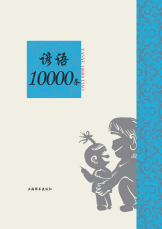
主要责任者: 温端政
责任方式: 主编
出版者: 上海辞书出版社
出版地: 上海
字数: 470 千字
页码: 1-440
开本: 32
中图分类号: H136.3
语种:中
定价:36.00
出版时间:2012-06
丛书多卷书否:否
书目简介:本册工具书共收录7067条词条。
被引频次:16
| 词条 | 谚语10000条 |
| 类别 | 中文百科知识 |
| 释义 |  主要责任者: 温端政 责任方式: 主编 出版者: 上海辞书出版社 出版地: 上海 字数: 470 千字 页码: 1-440 开本: 32 中图分类号: H136.3 语种:中 定价:36.00 出版时间:2012-06 丛书多卷书否:否 书目简介:本册工具书共收录7067条词条。 被引频次:16 |
| 随便看 |
开放百科全书收录579518条英语、德语、日语等多语种百科知识,基本涵盖了大多数领域的百科知识,是一部内容自由、开放的电子版国际百科全书。